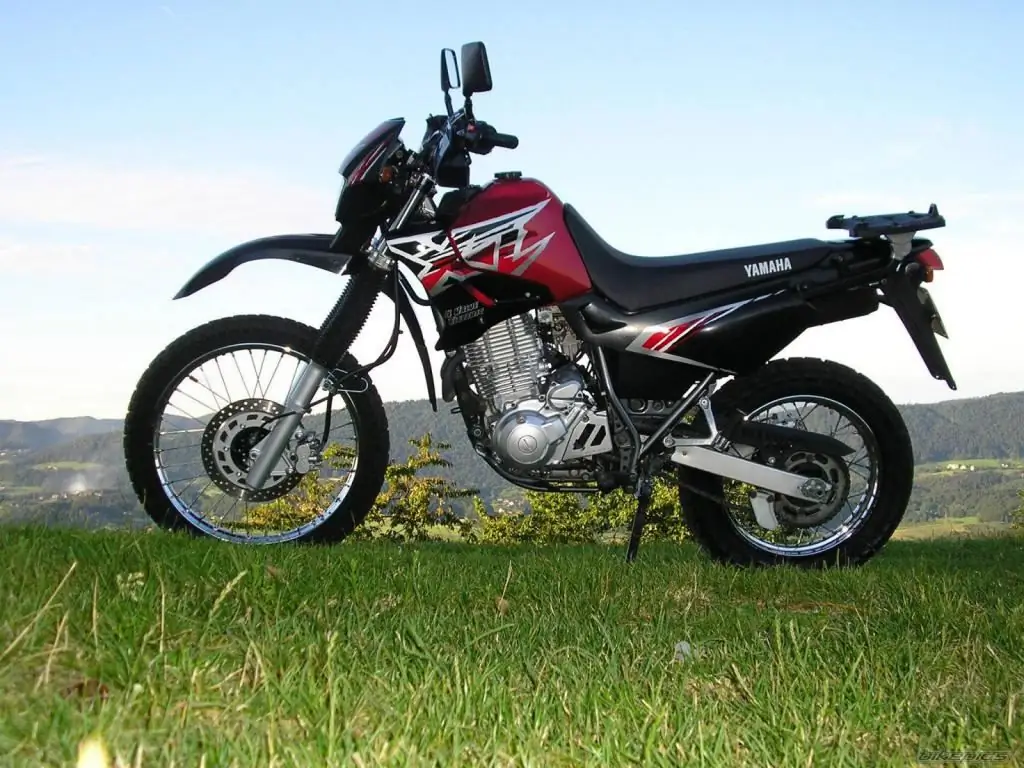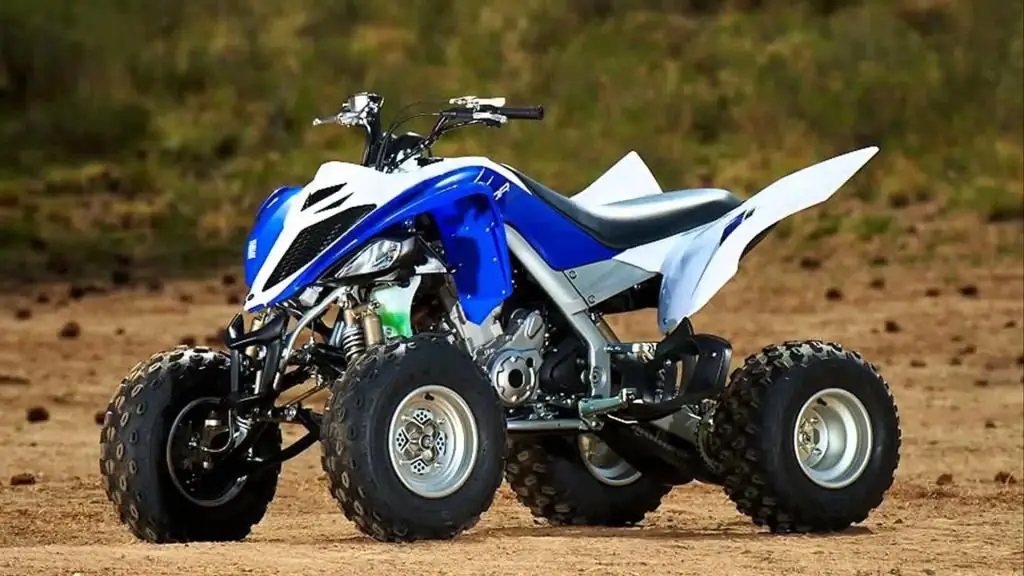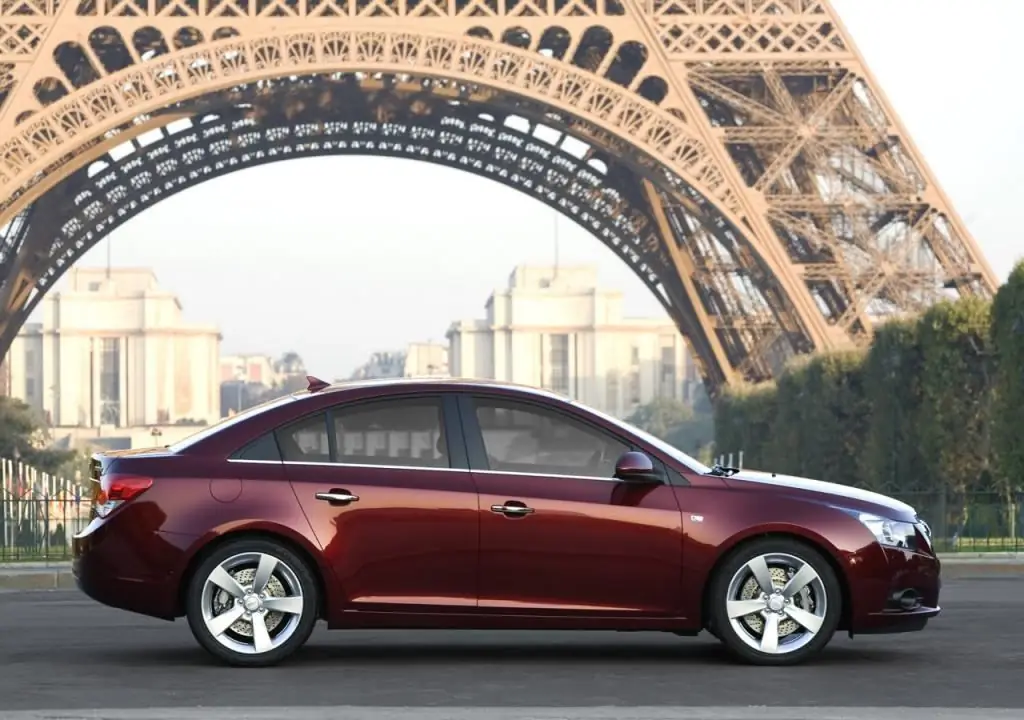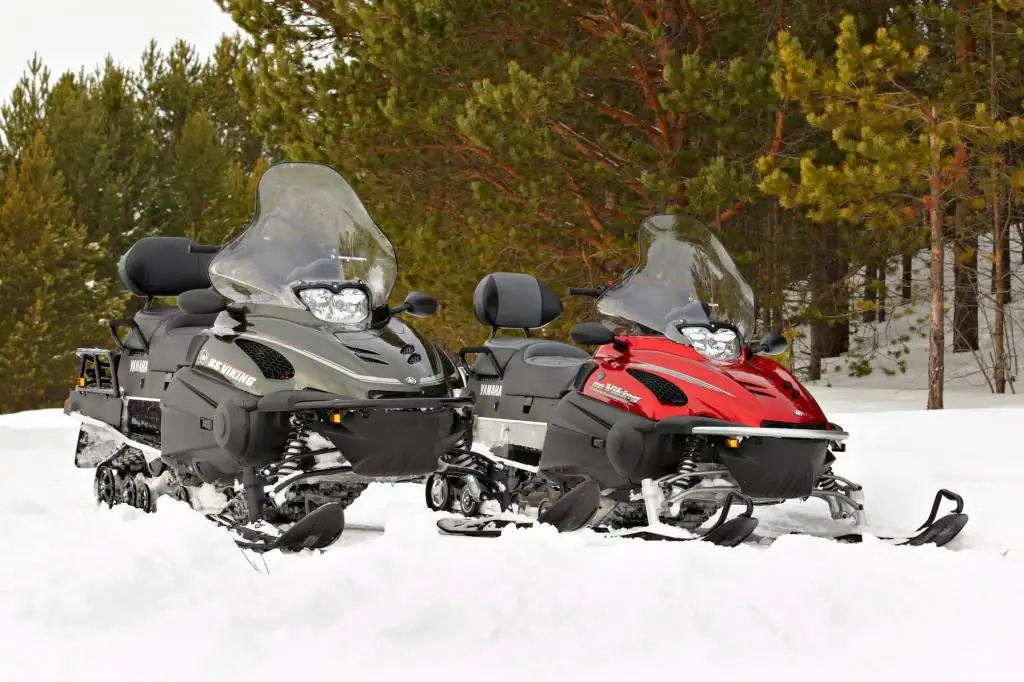2025 Author: Erin Ralphs | [email protected]. Last modified: 2025-01-22 21:14:17
UZ-Daewoo company in 2008 presented a second-generation Daewoo Nexia N150 compact sedan, which was an upgraded version of the original four-door sedan.
The updated version received an internal N150 index and has changed significantly compared to its predecessor, receiving a redesigned body, interior and new engines in the powertrain line.
The car was discontinued in August 2016.

Exterior
In terms of design, the Daewoo Nexia N150 strongly resembles cars of the 90s: the exterior is unassuming and archaic. The full face of the model is the most attractive part of the body, and this is mainly due to the aggressive headlights of the Nexia N150 and the new bumper design. From the profile and other angles, there is nothing to praise the car designers for: the silhouette is simple, archaic, with square-rounded rear wheel arches and a largeglass area, awkward optics and a bulky rear bumper.
Dimensions "Nexia N150" fully comply with the standards of the C-class:
- Body length - 4, 482 m;
- Height - 1,393 m;
- Width - 1,662m;
- Wheelbase - 2.52 m;
- Clearance - 158 mm.

Interior
The interior of the four-door sedan continues the trend set in appearance: the interior design is just as archaic, combining a modest and informative set of instruments, a three-spoke steering wheel, an angular design center console with a monochrome clock, three controls for the climate system and radio. Low-quality finishing materials and poor assembly worsen the interior space, which is why owners often resort to tuning the Nexia N150.
Front seats feature flat backs and an amorphous design with little lateral support and minimal adjustment. Only two people can comfortably fit on the back sofa, but even for them, legroom is limited.
The volume of the luggage compartment "Nexia N150" is 530 liters in the basic configuration. The back of the rear seat does not fold, there is no hatch for transporting long loads. A full spare tire and the necessary tools are located in an underground niche.

Specifications
Compact powertrain rangesedan is represented by two gasoline engines, paired with a five-speed manual transmission and front-wheel drive:
- The base engine is an in-line four-cylinder V8 A15SMS with a distributed injection system with a capacity of 80 horsepower and a volume of 1.5 liters. The engine is equipped with an electronic control unit, eight-valve timing. Up to 100 km / h, a car equipped with such an engine accelerates in 12.5 seconds, the maximum speed is limited at around 175 km / h. Combined fuel consumption is 8.1 liters;
- More "charged" versions of the "Nexia N150" are equipped with a four-cylinder engine of 1.6 liters and a capacity of 109 horsepower. The motor is equipped with a sixteen-valve timing, a multi-point injection system and a DOHC configuration. Acceleration to 100 km / h is carried out in 11 seconds, the maximum developed speed is 185 km / h. In combined mode, fuel consumption is 8.9 liters.
The second generation of the car is being created on the front-wheel drive T-body platform, which was developed by the engineers of the General Motors concern. The engine is located in a transverse position and was borrowed from the Opel Kadett E. McPherson shock-absorbing struts are installed on the front axle, and semi-independent struts with an elastic transverse beam are installed on the rear axle. "Nexia N150" is equipped with rack and pinion steering without power steering in the basic configuration (it was installed only on expensive modifications) and a braking system represented by ventilated disc brakes in front and drum mechanisms in the rear. ABS was not included in any package.

Optics
The design of the headlights consists of two lighting units, one of which is designed for low beam, the second - for high beam. The optics are combined into one body with turn signals and PTF. "Nexia N150" is not equipped with corrugated diffusers. The lenses were made of durable polycarbonate coated with a special coating, which increased the protection of the headlights from damage.
Innovations
Car manufacturers, in addition to strengthening the engine, making changes to the interior and exterior trim, equipped the Daewoo Nexia N150 with a door control system, locks and a fuel tank, powerful air conditioning, an audio system with four speakers and power windows. The difference between the model is a two-tier car radio, which is also available in the top configuration. The changes affected the rims: the car was equipped with 14-inch wheels.

Nuances of production and assembly
Components for "Nexia N150" - bumpers, rims, fuel system parts and others are produced at the UZ-Daewoo automobile plant. Only suspension, engines and transmissions are imported from abroad. Despite the developer's grandiose plans, the updated version of Nexia lacks innovative technologies: ABS, automatic transmission and airbags. The refusal of such functions is due to the preservation of the low cost of the car, for which it is valued. As compensation, the manufacturer offersthree-year warranty for Nexia N150. Each future buyer has the opportunity to carry out car tuning, including replacing the front bumpers, optics with Nexia N150, improving the technical component, interior and body design.
Electrical faults
The Check Engine light caused a lot of complaints from the owners of the Nexia N150, who noted its frequent failure, the cause of which was a controller glitch that did not recognize the crankshaft position sensor. The problem was fixed only by contacting the official dealer and replacing the controller itself. The problem was fixed by the manufacturer in 2009 and the reason for the failure of the Check Engine light today is low-quality gasoline.
UZ-Daewoo is not engaged in the production of electrical appliances: parts are supplied from different countries. Initially, they could not boast of high quality: for example, Indian-made devices suffered from “hanging” arrows, which manifested itself both on new models and on used ones. Complaints about Indian devices were massive, as a result of which the automaker eliminated this malfunction. "Hanging" instrument arrows by 2010 were completely eliminated and met with rare exceptions mainly on models manufactured before 2009.

Body and chassis
Shock absorbers and ball bearings Daewoo Nexia N150 do not tolerate bumps and potholes in Russian roads. Working life of these partshalved - up to 60,000 km with active off-road driving.
The service life of the front brake pads is the same 60,000 km, the discs must be changed every 120,000 km. The rear drum brakes have a similar service life of 120,000 km.
The main problems with the body are related to the paintwork of the Nexia N150: car owners note its low quality. Quite often there are unpainted areas and paint of different tones, which is a problem not so much of the Nexia concern, but of all automakers in this segment.
The negative feature of the Nexia N150 is the low-quality sealing of the joints of the body panels, which is fraught with water entering the cabin and luggage compartment during precipitation. Exactly the same problem was with glass seals.
Packages and cost
Daewoo Nexia was very popular on the Russian market and was offered in three trim levels: "basic", "classic" and "luxury". At the time of the end of serial production, the Nexia N150 was sold at a very affordable price, ranging from 450 to 596 thousand rubles, depending on the chosen modification and option package.
The basic equipment of the Daewoo Nexia N150 does not have a particularly rich set of options: interior heating, 14-inch steel wheels, fabric upholstery of the interior and seats, rear window heating with a timer function, remote control of the luggage compartment lid, gas tank hatch and doors. Topthe modification includes power windows for all windows, air conditioning, fog lights, power steering, athermal windows, a two-din radio with four speakers and a USB connector.

CV
Nexia N150 is often purchased exclusively for delivery or as a means of transportation. The requirements for such a car are appropriate: reliability, economy, unpretentiousness. Initially, the Daewoo Nexia N150 was not particularly reliable and practical, but over time, the manufacturer improved the model. This model was and remains a budget car, the cost of which is fully consistent with the quality.
Recommended:
Yamaha XT 600: specifications, top speed, operation and maintenance features, repair tips and owner reviews

The XT600, developed in the 1980s, has long been considered a legendary model by the Japanese motorcycle manufacturer Yamaha. A highly specialized enduro over time has evolved into a versatile motorcycle designed to travel both on and off the road
"Yamaha MT 07": technical specifications, engine power, maximum speed, operation and maintenance features, owner reviews

The Japanese concern Yamaha last year presented two models from the MT series at once under the markings 07 and 09. Motorcycles "Yamaha MT-07" and MT-09 were released under the promising slogan "The Light Side of Darkness", which attracted close attention of motorists
"Yamaha Raptor 700": technical specifications, engine power, maximum speed, features of operation and care, reviews and owner reviews

Japanese company Yamaha, specializing in the development and production of motorcycles, is not limited to motorcycles and develops scooters, snowmobiles and ATVs. One of the best ATVs of the Japanese company is the all-terrain vehicle "Yamaha Raptor 700"
"Chevrolet Cruz": the pros and cons of the car, specifications, equipment, features and owner reviews

In Russia, Chevrolet Cruze hatchbacks and sedans were produced at the company's plant in St. Petersburg (Shushary). With a station wagon body, cars were produced at the Avtotor plant in Kaliningrad. Reviews about this car are somewhat contradictory, especially in the Russian automotive community. In this article, we will analyze the pros and cons of the Chevrolet Cruze
"Yamaha Viking Professional": technical specifications, engine power, maximum speed, operation and maintenance features, reviews and owner reviews

"Yamaha Viking Professional" - a real heavy snowmobile, designed to conquer mountain slopes and snowdrifts. From the curves of the front bumper to the roomy rear luggage compartment, the Yamaha Viking Professional literally speaks of its utility snowmobile

